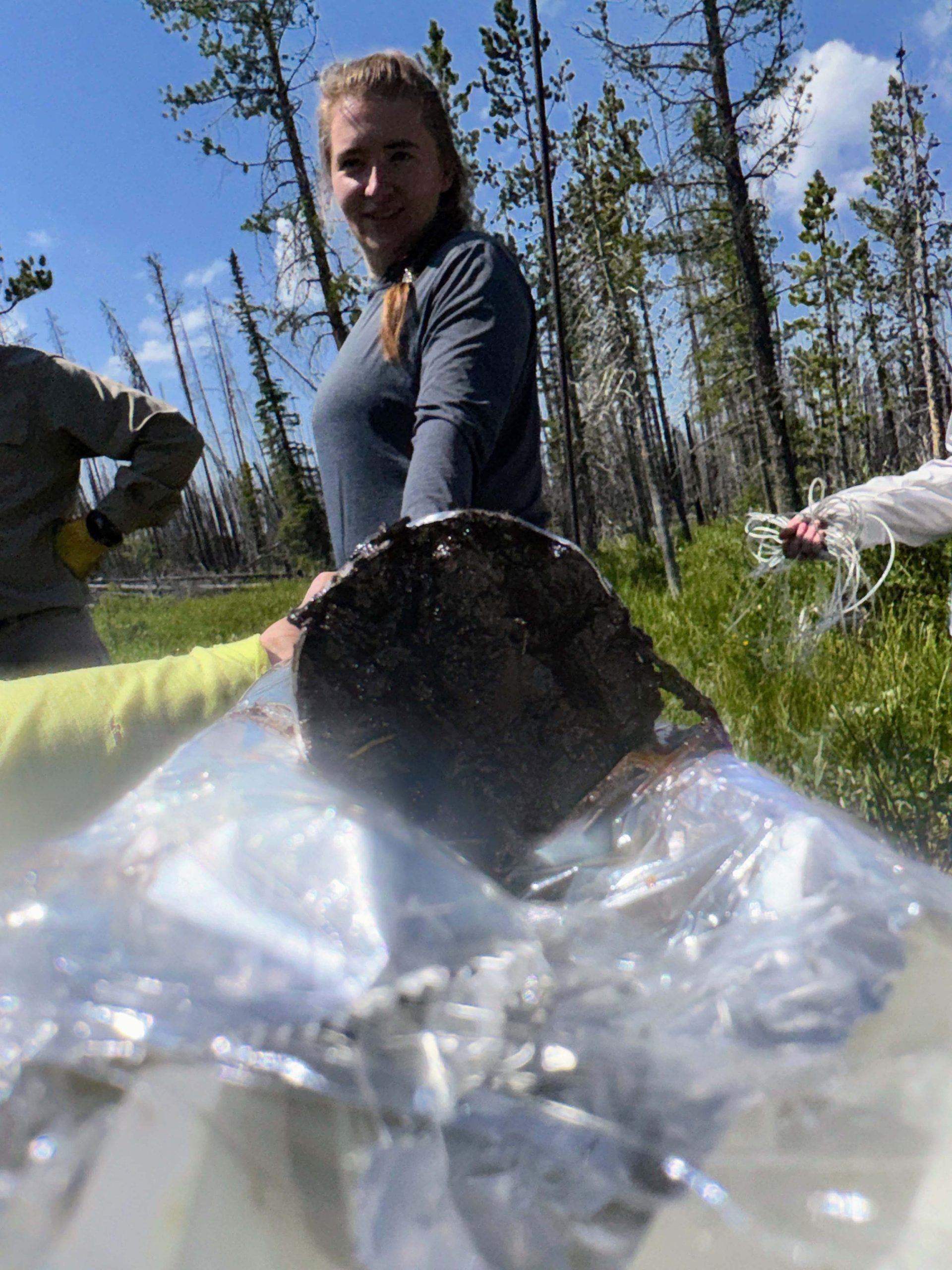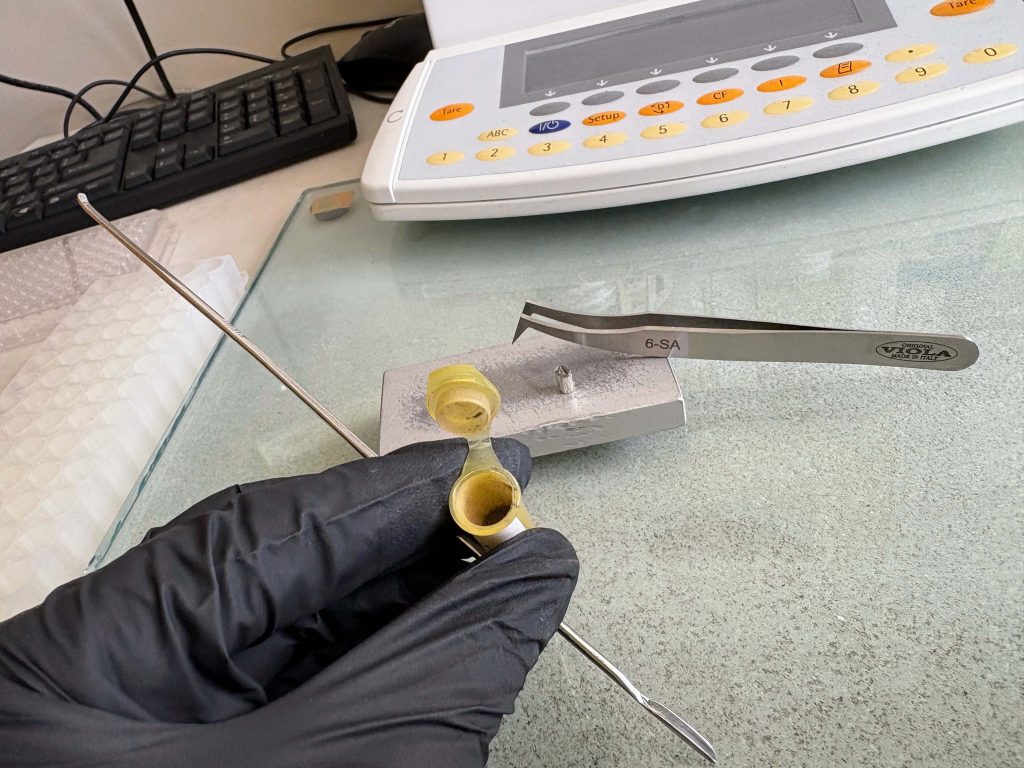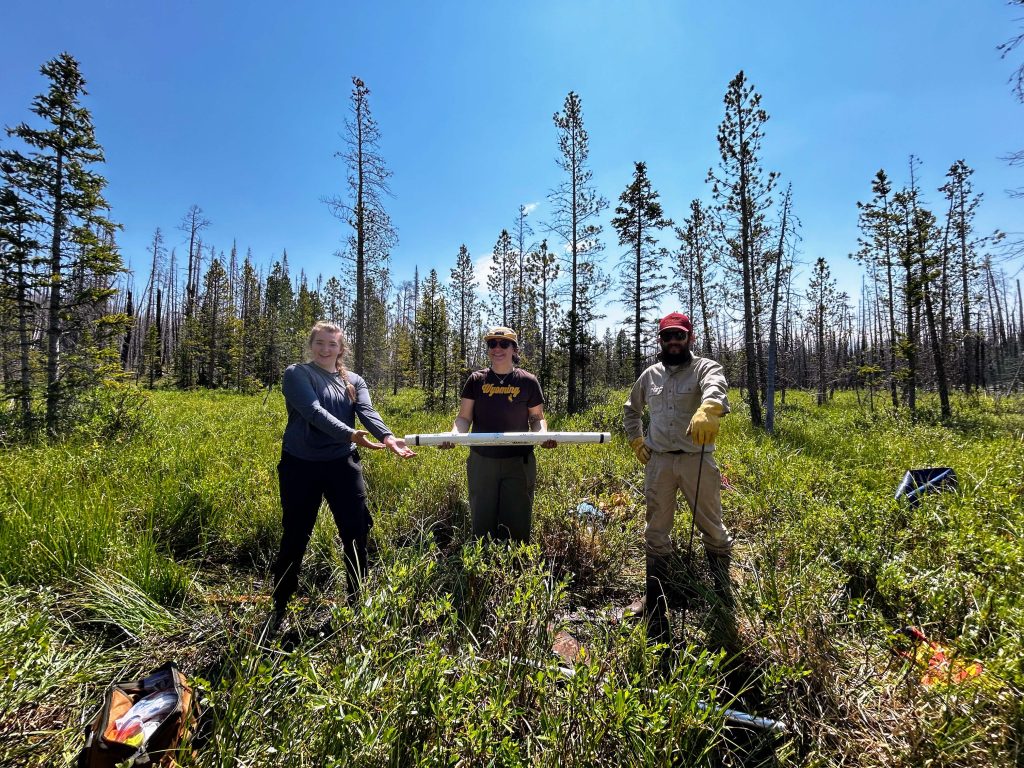
Stable Isotope Processing at the University of Wyoming
Expedition Location: Laramie and the Snowy Range, Wyoming
Expedition Dates: July 7–18, 2025
Field Team Members: Morgan Anderson* and Dr. Dulcinea Groff
Funding Support: Robert and Judith Sturgis Family Foundation Exploration Fund
Introduction
Tracing the history of seabird populations through time reveals how these coastal
species have weathered past climate change and offers clues about their future in a rapidly
warming Gulf of Maine. Seabirds are important bioindicators of ocean health; their foraging
behavior, diet, and colony size reflect variations in marine productivity, prey availability, and
climatic processes. Yet despite their ecological significance, the long-term record of seabird
populations in this region remains poorly understood. Reconstructing these relationships can
identify how seabirds have shaped island ecosystems and how these species have responded
to past environmental change.
My research uses stable isotopes of nitrogen (δ¹⁵N) and carbon (δ¹³C) preserved in island sediment cores as geochemical tracers of seabird activity through time. These isotopes provide unique insights into trophic structure and the relative contribution of marine versus terrestrial inputs to island ecosystems. Elevated δ¹⁵N values, for instance, indicate high trophic level inputs characteristic of seabird guano, while shifts in δ¹³C can signal changes in seabird foraging patterns or ocean productivity. I will use these isotopic proxies from dated sediment cores of islands off the coast of Maine to reconstruct seabird presence over the last several thousand years.
Conducting organic stable isotope analyses required collaboration with a facility that has the necessary specialized instrumentation. The Keck Stable Isotope Laboratory at the University of Wyoming offers facilities and expert mentorship in elemental analysis and isotope ratio mass spectrometry. Working with Dr. Dulcinea Groff, a paleoecologist experienced in seabird isotope studies, provided an opportunity to process my samples while learning more about methodological approaches to analyzing sediment cores.

Results and Significance
Isotope Laboratory Work
At the University of Wyoming, I worked closely with laboratory technicians to learn the
full stable isotope preparation and analysis workflow. The laboratory staff trained me on sample
preparation best practices, data validation, and troubleshooting of analytical results.

Over several days, I homogenized subsamples of my sediment cores using a ball mill, then carefully weighed and sealed the sediment into tin capsules for elemental and isotopic analysis. These were analyzed on a Carlo Erba 1110 Elemental Analyzer coupled to a Thermo Delta V Isotope Ratio Mass Spectrometer, giving me the total concentrations of nitrogen and carbon isotopes within my cores. The resulting data will later be paired with radiocarbon dating to establish a high-resolution age-depth model, allowing isotopic trends to be interpreted within the context of environmental change through time. These analyses will help identify periods of increased seabird activity and major ecological transitions in the Gulf of Maine, connecting past seabird population shifts to broader Holocene climate patterns. The skills and data generated during this expedition will form the analytical foundation of my master’s thesis, and will directly support my development of a multi-proxy reconstruction of seabird populations. In future work, I plan to integrate these isotope results with sediment geochemistry and radiocarbon chronologies to better understand how seabird communities responded to past climate variability and coastal ecosystem change.
Fieldwork in the Snowy Range
During my visit, I also joined Dr. Groff and colleagues from the University of Wyoming for
two days of peat coring in the nearby Snowy Range. Our field team included Dr. Groff, Lena
Schwebs, Dr. Andy Parsekian, Alexandrea Peterson, and myself. Together, we collected peat
cores from high-elevation wetlands using a Livingston corer to be used in a study of carbon
accumulation, hydrologic change and snowpack physics in alpine environments. Although the
sediment cores for my own thesis have already been collected prior to this trip, participating in
this fieldwork allowed me to gain practical experience with the Livingston corer equipment used
to collect the cores I now work on. Becoming proficient in this technique is essential for future
fieldwork as a paleoecologist. This experience provided valuable training in coring, sample
handling, and field logistics in wet alpine peatlands, which will benefit my continued career in
paleoecology.


Acknowledgements
I thank the Robert and Judith Sturgis Family Foundation Exploration Fund for supporting this
work. I am deeply grateful to Dr. Dulcinea Groff for her mentorship and technical guidance, and
to the University of Wyoming’s Keck Stable Isotope Laboratory staff for their expertise and
assistance throughout this project. I would also like to thank my advisor, Dr. Jacquelyn Gill, for
her continued mentorship and support throughout the development of my thesis research.

